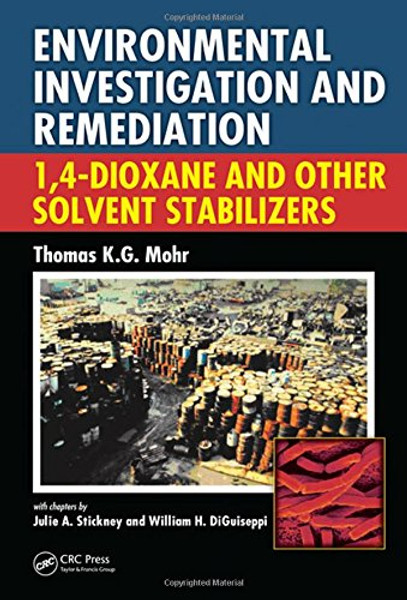Product Overview
A ubiquitous, largely overlooked groundwater contaminant, 1,4-dioxane escaped notice by almost everyone until the late 1990s. While some dismissed 1,4-dioxane because it was not regulated, others were concerned and required testing and remediation at sites they oversaw. Drawing years of 1,4-dioxane research into a convenient resource, Environmental Investigation and Remediation: 1,4-Dioxane and other Solvent Stabilizers profiles the nature of 1,4-dioxane and several dozen other solvent stabilizer compounds.
The author takes an approach he calls contaminant archeology , i.e., reviewing the history of the contaminating chemicals use in the industrial workplace at the site of release and how those uses impart chemical characteristics to the waste that affects its fate and transport properties. The book examines the uses, environmental fate, laboratory analysis, toxicology, risk assessment, and treatment of 1,4-dioxane in extensive detail. It provides case studies that document the contaminant migration, regulation, treatment, and legal aspects of 1,4-dioxane releases. It also describes the controversy over interpretation of 1,4-dioxanes toxicology and associated risk, as well as the corresponding disparity in states regulation of 1,4-dioxane. A final chapter examines the policy implications of emerging contaminants like 1,4-dioxane, with discussion of opportunities to improve the regulatory and remedial response to this persistent contaminant in the face of toxicological uncertainty.
Mobility, persistence, and treatment challenges combine to make 1,4-dioxane a particularly vexing contaminant. It is more mobile than any other contaminant you are likely to find at solvent release sites. Filled with case studies, equations, tables, figures, and citations, the book supplies a wide range of information on 1,4-dioxane. It then provides passive and active remediation strategies and treatment technologies for 1,4-dioxane in groundwater and provides you with the technical resources to help you decide which are appropriate for your site.
For more information about Thomase Mohr and his book, go to http://www.The14DioxaneBook.com








